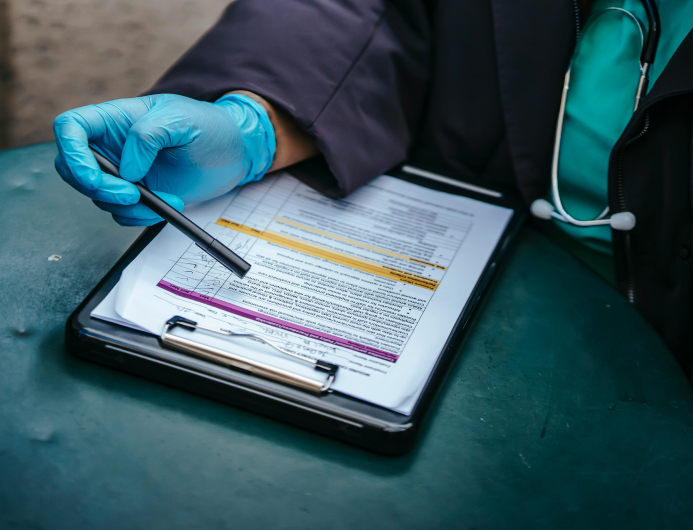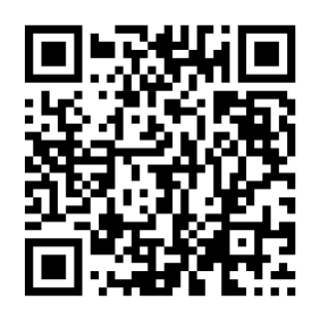The growing administrative workload in the healthcare sector necessitates the use of advanced document management solutions.
In this article, we explore how intelligent document processing (IDP) alleviates the administrative burden for healthcare professionals – and the role image processing technology plays in this transformation.
What is intelligent document processing?
Intelligent document processing (IDP) is a technique for automating data extraction. As such, it replaces manual data extraction. The key objective is to enable automated data processing in backends, such as electronic health records (EHRs) systems.
At its core is machine-learning technology, such as neural networks and optical character recognition (OCR).
IDP workflows generally have three stages: Capture, extraction, and processing.
- Data capture: OCR works with digital images. IDP thus always begins with a document scan. For instance, with a nurse capturing an image with their healthcare operations app on an ordinary tablet.
- Data extraction: The OCR engine in the app now detects and analyzes the text in the document and turns it into machine-readable key-value pairs.
- Data processing: These key-value pairs are then processed in a backend system.
This saves healthcare professionals the time and effort of manually typing out critical medical or patient information. Instead, they can submit it to their electronic systems with a simple scan.
OCR is central to this process. However, despite significant advancements in recent years – even advanced engines now run on consumer phones – its accuracy still heavily depends on the quality of the input image. This is why OCR apps use an array of image-enhancing filters, such as binarization, to maximize image contrast.
Why the healthcare sector needs IDP
Healthcare professionals deal with a myriad of different documents. Their tasks include processing medical records, such as patient charts, patient onboarding, where patient admission and registration forms have to be managed, and logistical tasks, such as inventory management and medical billing.
Challenges of manual document processing
Despite advances in digital technology, including EHRs, healthcare practitioners continue to struggle under the burden of administrative tasks. Many complain that they spend more time on administration than on their patients.
Manual data transfer into EHR systems takes a significant effort, impacting efficiency and patient safety. This has prompted some to keep relying on paper-based processes as far as possible.
Largely manual workflows have crucial disadvantages, however:
- Error-prone: Humans will make mistakes when transferring data into an electronic system. If they are lucky enough to catch them, they have to spend more time re-entering the information. If not caught, potential mix-ups endanger patient safety.
- Slow processing: Even leaving errors aside, manual data entry is slow. This creates significant backlogs and delays in patient care. Meanwhile, accessing and sharing paper records is tedious and requires manual retrieval and searching.
- Compliance risks: Healthcare organizations have to comply with strict regulations concerning patient privacy and data security, among them HIPAA. Records must be accessed, processed, stored, and disposed of securely – a challenge with paper-based systems.
- Cost and storage issues: Paper records are vulnerable to physical damage and loss. Safely storing vast amounts of them is a significant cost factor.
The resulting administrative overhead harms patients and practitioners alike, causing medical errors and impacting caregiver health.
Key benefits of IDP in healthcare
Automation technologies like IDP tackle these challenges by replacing cumbersome manual data entry with automated data extraction.
This unlocks a number of benefits:
- Enhanced efficiency: IDP accelerates data entry and facilitates automated processing. Practitioners can reclaim time for patient care.
- Improved accuracy: Modern OCR software extracts data reliably, especially when combined with sophisticated image preprocessing. This enhances patient safety and eases administrative tasks.
- Better patient experience: When practitioners spend more time with their patients, they feel better heard and can better voice their health concerns.
- Regulatory compliance and security: IDP enhances compliance with regulations like HIPAA by enabling secure digital storage, access controls, and audit trails.
- Scalability: Automated data extraction is well-suited to handle a growing volume of paper records.
An efficient IDP system frees healthcare providers of cumbersome administrative tasks, giving them more time for the work that counts: patient care.
Achieving this result, however, hinges on implementing a robust IDP solution – one that addresses the unique challenges of healthcare documents.
How to achieve high-quality document scans suitable for IDP in healthcare
The documents seen in healthcare settings are often blurry, smudged, or crinkled. Besides, lighting conditions are often less than ideal, bringing less sophisticated OCR scanners to their limits.
This is why you need a modern, high-performing solution to implement IDP in your healthcare workflows.
With the Scanbot Document Scanner SDK and Data Capture Modules, you can integrate a whole intelligent document processing workflow into your healthcare management app.
The Scanbot Document Scanner SDK delivers crisp document scans. Its built-in Document Quality Analyzer ensures that only high-quality images are accepted for OCR processing. The Scanbot OCR SDK replaces manual data entry with automated data extraction, delivering searchable PDFs that are easy to index. The Data Capture modules return the relevant information as key-value pairs, ready for automated processing.
All Scanbot SDKs run entirely offline, without connection to third-party servers. This on-device processing ensures compliance with strict data protection regulations such as HIPAA.
See for yourself how it works in our free demo apps for document scanning and data capture.
If you want to learn more about how you can use our solutions for IDP in healthcare settings, please contact our solution experts at sdk@scanbot.io.







